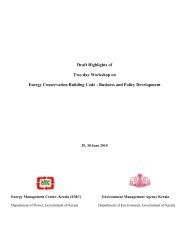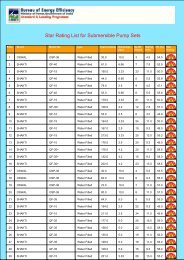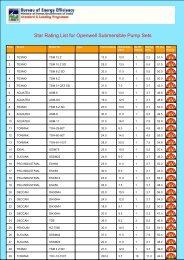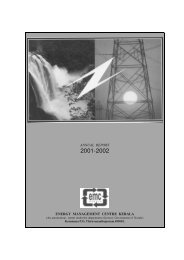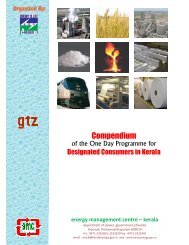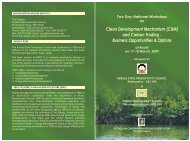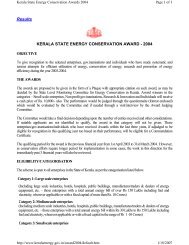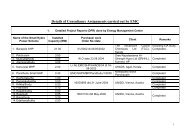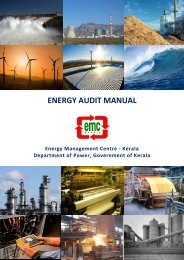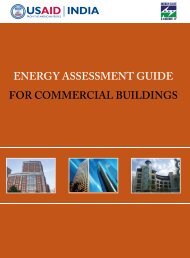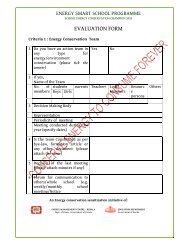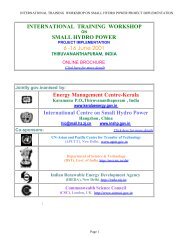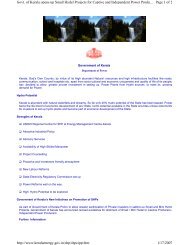FRICK India - Compressors Dos & Don'ts
FRICK India - Compressors Dos & Don'ts
FRICK India - Compressors Dos & Don'ts
Create successful ePaper yourself
Turn your PDF publications into a flip-book with our unique Google optimized e-Paper software.
Check the water level in the condenser tank or cooling tower<br />
Start the condenser water pump and also check up<br />
compressor head jacket outlet water<br />
Check the oil level in the compressor, open the compressor<br />
automatic unloading valve switch, if it is manual unloading<br />
open the manual unload valve.<br />
Start the compressor motor step wise until it reaches the rated<br />
speed<br />
Close the unloading valve of compressor and check the oil<br />
pressure
Open the suction manifold of the compressor gradually such that the<br />
compressor motor ampere should not cross the rated amps<br />
<br />
After complete opening of suction manifold valve, put the evaporator blower<br />
in operation for cold storage, agitator for ice plant, chilled water pump sets for<br />
S & T chiller etc.<br />
<br />
Open the liquid line feeding valve and also adjust the expansion valve to<br />
maintain constant suction pressure in accordance with evaporative temp.<br />
<br />
Note all the compressor parameters in log book for every one hour<br />
<br />
Check the compressor head temp and pressure. If it is above designed range<br />
find out cause and rectify it<br />
<br />
See that the pressure difference between suction and oil shall be a minimum<br />
of 25 PSIG<br />
<br />
Check the temp of the compressor motor
Close the liquid line solenoid valve / stop valve at receiver<br />
Close the compressor suction manifold valve as soon as compressor<br />
suction pressure reaches 5 PSIG<br />
Should not run the compressor under Vacuum<br />
Switch off the blower fans / agitators etc.<br />
Stop the compressor<br />
But run the condenser water pump, until receiver pressure reaches<br />
minimum possible
1. Do not use the compressor as a vacuum pump or air building pump<br />
for evacuations and pressure testing the system<br />
2. Do not start the HDI compressor before priming the oil pump<br />
3. Do not let the compressor run without a minimum oil level of half<br />
of the indicator glass<br />
4. Do not run the compressor fitted with flexo seal assembly without<br />
water<br />
5. Do not keep your compressor running if abnormal heating of the<br />
compressor noticed<br />
6. Do not run the compressor if you find any abnormal sound while<br />
running
7. The suction trap fitted in compressor is equipped with a filter bag<br />
inside the suction screen. This bag is used for during the running<br />
period only and is to be replaced with a clean bag after the 1 st 24<br />
hours of operation. Do not keep filter bag in the trap more than<br />
one week.<br />
8. Use only <strong>FRICK</strong> recommended compressor oil in the compressor<br />
i.e. shell claves – 68 (Bharat Shell) or equivalent Viz. (1) Servo<br />
Freez – 68 (<strong>India</strong>n Oil), (2) Setwin – 68 (Hindustan Petroleum),<br />
Freezol – 68 (Bharat Petroleum)<br />
9. Do not run your compressor with dirty oil, so check it out after<br />
every 200 hours of running. If it is dirty, first drain the dirty oil<br />
and then make sure that you clean the crank case from inside and<br />
the filter system completely before you fill the new oil
10. Replace faulty pressure gauges with correct one’s immediately<br />
11. Do not run the compressor under charged because this will lead to<br />
the over heat<br />
12. Do not run the compressor over charged to avoid the liquid<br />
coming to the compressor<br />
13. Do not run the compressor if you find discharge pressure is very<br />
high. It will cause over heating. Check out for non – condensable<br />
gas in the system, which must be removed<br />
14. Maintain the log sheet regularly and correctly, having following<br />
parameters being filled after ever one hour of running: (a)<br />
suction pressure, discharge pressure, oil pressure, discharge<br />
temp, motor amps, voltage, etc.
15. Use only genuine <strong>FRICK</strong> spare parts procured from <strong>FRICK</strong><br />
Company or from its branch offices<br />
16. Under no circumstances belts be forced on the sheaves with<br />
crow bars, wedges, screw drivers or bars of any kind. Because<br />
outside jacket of the belts is made of fabric can be easily<br />
broken when placed under shearing strain<br />
17. Belt sheaves must be in correct alignment. If they are out of<br />
line, the belt will show excessive wear very quickly<br />
18. During erection: Be sure however to keep your weld at least a<br />
foot or more away from threaded joints, because the welding<br />
heat on the pipe is apt to run the thread connections<br />
19. Use approved pipe joint compound only. We recommend the<br />
use of litharge and glycerin. When using litharge and glycerin<br />
be sure it is carefully and thoroughly mixed and that no free<br />
litharge or glycerin is permitted to get into the system
20. Flare Joints: These must be made with care. If the flaring tool is<br />
used, dry or without proper oiling, it will thin out the tubing to a<br />
point where there may be danger or breakage<br />
21. Strainer: These must be placed in the line ahead of all expansion<br />
valves of the automatic and manual type. Suction traps are<br />
standard equipment with all compressors and are intended to<br />
remove the find particles of dirt which may accumulate in the<br />
system<br />
22. The higher the back pressure carried and lower head pressure<br />
carried and lower head pressure carried the more efficient the<br />
machines and the more economical to operate<br />
23. The frost may be allowed to follow the suction pipe to the<br />
compressor, but it should not be made to cover the compressor<br />
cylinders
24. Open the compressor about one month after being put in<br />
operation, remove the safety heads, if it appears dry, it may<br />
necessary to carry the oil level slightly higher in the crank case.<br />
If excessive oil appears in the heads, the level in the crank case<br />
may be lowered slightly. See that the screws and bolts should be<br />
tightened carefully after re-assembling<br />
25. Some oil will be carried over the ammonia compressor into the<br />
high pressure trap. This trap should be drained at least once in a<br />
week. Do not make a pipe connection from the high pressure<br />
trap to the crank case of the compressor<br />
26. After about one week operation, the compressor should be<br />
opened and thoroughly cleaned and that try the nuts on the<br />
connecting rod bolt to be sure they are tight.
27. Adjusting Crank Bearing: In HDI compressor, connecting rod<br />
crank end bearings are split and are provided with laminated<br />
spaces between the halves. If the bearings become worn, they<br />
can be taken up by removing one of the thin liners on each side.<br />
If one liner is too much adding liners made of thin paper.<br />
28. Test readjustment of connecting rod: To test the adjustment of<br />
connecting rod uses a piece of 2” x 4” batten or something<br />
similar as a leaver and the front of the crank case as a fulcrum.<br />
Place one end under the connecting rod and move up and down<br />
to see if the bearing is loose. Bu turning the machine over by<br />
hand it can be determined whether connecting rod adjustment<br />
is too tight.
29. Removing pistons – Pistons rings: Always place the piston ring<br />
guide furnished with each compressor in the head before<br />
attempting to remove the piston. Clamp several washers around<br />
cylinder head studs to hold the ring guide down while the piston<br />
are being withdrawn or replace. The piston rings are made of<br />
the finest materials obtainable for such work and they will run a<br />
long time without needing replacement<br />
30. Re-bore of cylinders: If the piston bore of the machine become<br />
worn out don’t put over size piston rings to the standard bore<br />
and piston. The machine should be sent to factory for re-boring<br />
and also replaced with suitable over size piston and piston rings.<br />
31. Compressor Valves: All puppet valves should be grounded to a<br />
prefect seat about once in a year by using fine grade of<br />
automobile valve grinding paste, plate valves will very rarely<br />
require grinding. Inspect them about once in every six months<br />
and keep screws over cage drawn up tight
32. Glanding / Re-packing ammonia valves: All ammonia stop valves<br />
are double seated and can be re-packed under pressure by<br />
opening the valves wide, until the back of the valve bottom<br />
seated again the bonnet.<br />
33. Charging and starting of plant: Proper charging of the plant is<br />
very important, causes have been noticed where the new plants<br />
have been damaged at the time first starting, proper care as laid<br />
down is essential for the long life of the costly equipment<br />
34. At the time the machine is opened to clean, it is better to try and<br />
tighten the nuts on the connecting rod bolts to be sure that they<br />
are alright<br />
35. Before starting an assembled compressor (after repairs /<br />
maintenance) remove plug on the discharge side of the cylinder<br />
and run the compressor by closing the suction and discharge<br />
valves. The air in the compressor will then be discharged. Just<br />
as the machine is stopped replace the plug after which the<br />
compressor may be put in operating in normal manner.
36. A new machine / motor should always be run unloaded or at slow speed<br />
for an hour or so, in order to make sure that it operates properly<br />
37. If the compressor is cooled by means of cooling water, the water flow<br />
must always be stopped during period of standstill. This is normally<br />
done by means of a solenoid valve in the water inlet line to the<br />
compressor<br />
38. Water or other fluids must not be used for pressure gauge between the<br />
nitrogen cylinder and the plant. The compressor stop valves must also<br />
be closed during pressure testing<br />
39. Plant safety valves must normally be blanked off during pressure testing<br />
as their opening pressure is lower than the testing pressure<br />
40. It is not advisable to re-use oil which has been drawn from a<br />
compressor or plant. This oil would have absorbed moisture from<br />
the air and may cause operating problems. Always switch off the<br />
power to the crank case heating element before drawing off the oil.
System should not be allowed to stand for months<br />
with pressure in the lines and equipment. System<br />
should not be pumped down and vacuumised for<br />
seasonal shut down or for long period<br />
Outlet valve – close<br />
Suction valve – cut opening<br />
Compressor off<br />
AFT 10 Min.<br />
Pump off.
Operation: These days power is not only costlier, but scarce also. Hence the<br />
operation of the plant should be in such a way to keep the power consumption<br />
to the minimum and at the same time the required design conditions are<br />
maintained in the chambers. Now we will try to analyze the various factors that<br />
contribute for the variations in power consumption. The power consumption of<br />
any refrigeration system shall depend on;<br />
<br />
<br />
<br />
<br />
<br />
<br />
<br />
<br />
<br />
<br />
<br />
System design & installation<br />
Adjusting the system / ammonia flow rate<br />
Condensers & Evaporators<br />
Removal of non – condensable gases<br />
Oil in the cooling coil<br />
Leakage in starting by-pass valves and suction valve assemblies<br />
Belts<br />
Electrical contact points<br />
ACU fan motors / agitator fan motors<br />
Product loading<br />
Stopping & starting of the plant during short period of standstill<br />
Operators
System Design & Installation<br />
System should be properly designed and installed only by<br />
experienced professionals for proper balancing of all equipments<br />
of the refrigeration system. It’s always advisable to go in for a<br />
system with single source responsibility<br />
Adjusting the system / ammonia flow rate<br />
The main operating parameter which controls the power<br />
consumption shall be suction and discharge pressure. Keep the<br />
suction pressure as high as practicable depending on the temp level<br />
of work to be done and discharge pressure as low as practicable.<br />
For best result adjust the ammonia flow rate to allow frost to develop<br />
as far back as the suction scale trap. Now let us see the factors that<br />
influence the suction and discharge pressure.
Suction Pressure<br />
a. Coil / Fins surface cleanliness<br />
Coils and fins surfaces should be kept clean and washed with forced water<br />
spray at least once in a year<br />
b. Obstruction free fins spacing<br />
Fin spacing should be clear and dusts removed for free flow of air, other wise<br />
c. Oil in the cooling coil<br />
Oil in the cooling coil reduces heat transfer area and there by reduces its<br />
capacity. Oil from cooling coils should be removed once in 4 months<br />
d. Defective / Burnt air cooling coil motors<br />
The defective / burnt air cooling unit motors reduce not only the air quantity,<br />
but also air velocity across the cooling coil, resulting reduction in capacity<br />
e. Product stocking<br />
We should leave at least 3’ clear space all around the cooling coils and leave at<br />
least 18” clearance at the ceiling, otherwise cooled air short cycles resulting<br />
low suction pressure. Also there should be at least 6” clearance between the<br />
wall surface and the product. This will allow warm air to reach the ceiling to<br />
be drawn by the air cooling unit.
Suction Pressure<br />
All the above leads to the following:<br />
Low suction pressure which reduces the compressor capacity and increases<br />
running time<br />
Ammonia liquid return to compressor<br />
Increases frosting over coils and then longer defrosting time<br />
Discharge Pressure<br />
a. Clean condenser surface<br />
Condenser surface should be clean and free of scales. It’s advisable to clean<br />
the surface every month and apply a coat of Zinc rich paint with heat<br />
reflection properties<br />
b. Sufficient water flow<br />
Ensure pump condition is OK. Water line filters and strainers are cleaned<br />
every 4 months<br />
c. Blocked sprinkler header hole<br />
Keep the sprinkler header holes clean from fungus and scale blockage
d. Non – condensable gases<br />
During maintenance, there is every possibility of air entering the<br />
system, which does not condense in the condenser and thereby<br />
increase the condensing pressure<br />
Discharge Pressure<br />
All the above leads to the following:<br />
a. High discharge pressure which decreases the compressor capacity<br />
and leads long running<br />
b. Compressor runs hot and increases wear & tear<br />
Condensers & Evaporators<br />
Keep the condensers and evaporators tubes free from dust / scals,<br />
which improves the heat transfer rate
Removal of non – condensable gases<br />
Presence of non condensable gases in system increases the discharge<br />
pressure and thus the power consumption. System is to b e purged at least<br />
once in a month and compulsorily immediately after any repair /<br />
maintenance<br />
Procedure for Purging<br />
Plant should remain stopped for the night, while the condenser water pump<br />
should be kept running for about 3 or 4 hours. Early in the morning open the<br />
purge valve on the condenser header very slightly and air purged into a bottle<br />
of cold water, when bubbles start getting bigger close the valve.<br />
Oil in the Cooling Coil<br />
Any oil in the cooling coil / evaporator reduces the effective heat transfer area<br />
of the coil. Drain the oil from the cooling coil at least once in 4 months
Leakage in starting bypass valves & suction valve<br />
assemblies<br />
The above not only results in compressor becoming hot but also the<br />
compressor efficiency gets reduced.<br />
<br />
Belts<br />
Worn out belts will slip, these are to be checked periodically and replaced if<br />
damaged / worn out. Care should be taken that belt grooves and belts are<br />
clean and oil free. During maintenance there is every possibility that by<br />
accident oil comes in contact with fly wheel, motor pulley and belts<br />
Electrical contact points<br />
All electrical termination and other electrical contact points should be<br />
regularly checked / carbon formation if any should be removed & tightened<br />
ACU fan motors<br />
Defective and burnt motors of air cooling units and agitators are to be<br />
replaced immediately for maximum utilization of cooling coil capacity
Product loading<br />
Product loading in the storage shall be pre – planned for minimum infiltration<br />
and also to minimize the temp fluctuation inside the chamber<br />
Stopping & Starting of plant during short period of standstill<br />
For short duration of stopping the system, capacity must be reduced to about<br />
50% (i.e. 50% of evaporators are flooded) by closing the receiver outlet valve,<br />
we need not pump down the system completely. It is not necessary to shut of<br />
the suction and discharge stop valves. Compressor is started at preferably not<br />
more that 50% capacity and increased gradually by operating the received<br />
outlet valves in order to avoid possible liquid hammering in the compressor and<br />
oil foaming in the crank case.<br />
Operators<br />
Maintaining the optimum operational parameters as indicated under item no.<br />
(2), during operation to some extent largely depend on the attitude of operators.<br />
For fear of ammonia liquid return during nights / leisure period, operators tend<br />
to reduce the ammonia flow rate to a safe level, thereby running the compressor<br />
at partial capacities
1.Oil Pressure<br />
20 PSIG above suction pressure<br />
2. Oil Level ¾” Level in Oil Sight Glass<br />
3.Oil Consumption<br />
4.Temp. of head cooling water inlet<br />
1.3 to 1.5 liters / day / 20 Hours<br />
operation<br />
Approximately – 100 F<br />
5.Compressor crank case temp<br />
6.Cylinder head and discharge line<br />
7.Frosting<br />
Not more than 50 F above ambient<br />
temp<br />
Average Maximum : 225 F<br />
Minimum : 290 F<br />
Frost should never appear beyond<br />
suction scale trap
Daily<br />
Check sight feed lubricator<br />
Check oil pressure<br />
Check suction pressure and discharge pressure<br />
Check suction temperature<br />
Check fly wheel and motor pulley alignment<br />
Check frosting on suction scale trap<br />
Once in a Week<br />
Check oil seal leak<br />
Check discharge line temperature<br />
Check water jacket temperature
Once in a Month<br />
Check all motors and pumps for adequate lubrication<br />
Check belts for tension and cleanliness<br />
Belt to be depressed to about ¾” – 1” with normal thumb pressure<br />
Do not force the V-Belts on the pulley / flywheel by screw driver / hacksaw blade /<br />
spanner<br />
Purging of non – condensable gases from the system<br />
Cleaning of the condensers<br />
Once in a Year<br />
<br />
<br />
<br />
<br />
<br />
<br />
Condensers should be cleaned and painted with zinc rich paint<br />
All belts should be checked and worn out belts should be replaced<br />
All strainers in the water line and refrigerant line should be cleaned<br />
Conditions of contractors / terminators in all the electrical system should be<br />
checked<br />
Oil should be drained from oil separator, receiver and also evaporator<br />
Check suction and discharge valves assemblies in the compressor
System should not be allowed to stand for months<br />
with pressure in the lines and equipment. System<br />
should be pump down and vacuumised for seasonal<br />
shut down or for long periods



